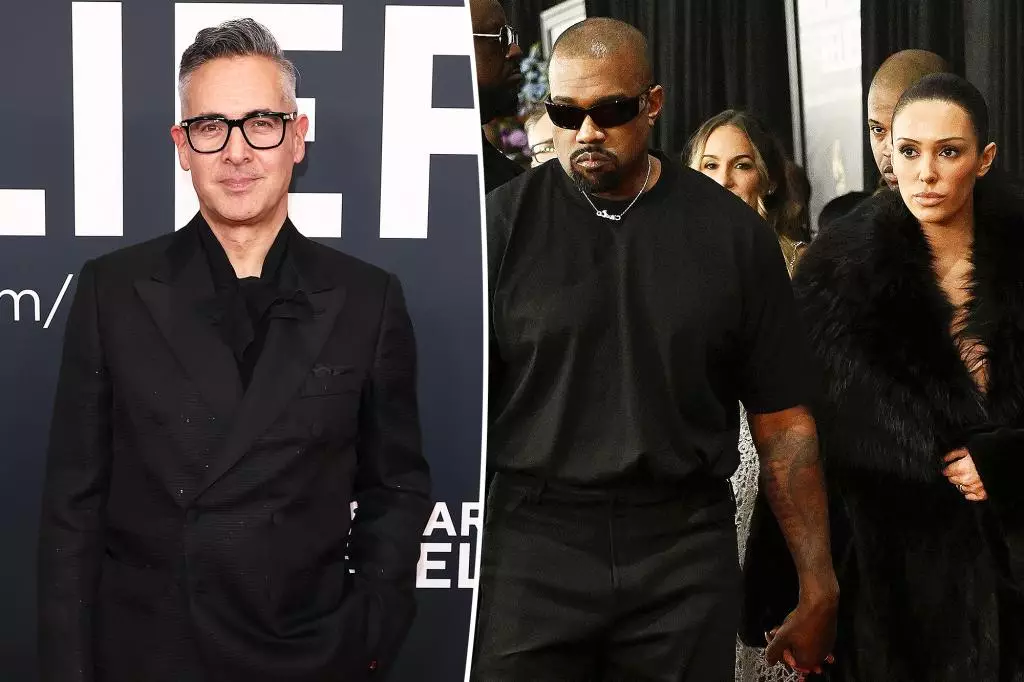The Grammy Awards have always been a reflection of beyond mere musical talent; they also showcase the glamorous spectacle that accompanies the music industry. In 2025, however, the event faced an unexpected controversy that raised fundamental questions about dress codes and personal expression. Raj Kapoor, the executive producer of the awards, brought attention to the “standards” expected at this prestigious event, particularly in light of a striking appearance by Kanye West and Bianca Censori. This article seeks to explore the layers of this incident, shedding light on the dichotomy between artistic freedom and common standards in public appearances.
Raj Kapoor emphasized the need for an “artistic black-tie” dress code, suggesting that attendees should adhere to a certain standard of propriety. While the world of fashion offers endless avenues for creative expression, Kapoor’s statement highlights that there are still expectations within a formal event like the Grammys. The event has long been considered a site where high art meets celebrity glamour, so such guidelines are not merely bureaucratic; they are foundational to maintaining the event’s integrity.
Kapoor’s assertion raises an important point: variation exists in how the dress code is interpreted, especially in the music industry. Not everyone’s understanding of “artistic” aligns with what might traditionally be considered appropriate for a high-profile awards show. This begs the question—how far can one deviate from established norms before the line between artistic expression and public decency is crossed?
The controversy ignited when Bianca Censori chose to wear a sheer, near-naked outfit that challenged many of the unwritten rules that accompany such prestigious events. Clad in a completely transparent minidress paired with thigh-high boots, Censori’s choice broke the mold in a way that left little to audience imagination. This brazen approach can be viewed from multiple angles—one can appreciate the sheer audacity of her fashion choice, or one can argue that she disrespected the venue’s standards.
The couple’s intention seemed clear: to create a scene, to capture attention. According to various sources, their outfit was inspired by West’s album cover “Vultures 1,” which featured Censori in just as daring an ensemble. Yet, despite their agenda, they notably skipped the actual ceremony afterward to celebrate at a private afterparty. This decision further complicates the narrative—was the goal merely to shock rather than participate in the event meaningfully?
Interestingly enough, the Recording Academy’s lack of publicly issued clothing restrictions has long left room for interpretation, creating a gray area where rules are concerned. In 2013, CBS had already established a “wardrobe advisory” that sought to set boundaries—a testament to the ongoing scrutiny celebrities face regarding their attire. Such advisories emphasize keeping certain body parts adequately covered, hinting at the tension between personal expression and societal expectations. In this case, Censori’s outfit seemed to challenge these guidelines directly, raising eyebrows at a time when the industry has already shown increasing leniency regarding fashion boundaries.
While Kapoor’s comments about the dress code are a call to rein in expectations, they also acknowledge a significant truth in the industry: that music and fashion are interconnected yet divided by standards and practices that vary widely.
Interestingly, public reaction to Censori’s bold attire has been mixed. Some observers wondered if it was a misguided attempt at creativity or a strategic choice aimed at garnering publicity. Insiders have noted that both West and Censori thrive on attention, whether it’s good or bad. This phenomenon raises critical questions regarding the nature of celebrity—does attention equate to success, regardless of the context?
Ultimately, while fashion will always be about self-expression, the events like the Grammy Awards present a unique challenge. They showcase not just artistry in music but also the social norms that govern public appearances. As celebrities like West and Censori push these boundaries, Kapoor’s comments remind us that the conversation around fashion, standards, and artistic freedom is ever-evolving, particularly in a digital age where every move is scrutinized and amplified.
The 2025 Grammys served as a microcosm of the tension between conventional norms and the avant-garde spirit of the music industry, inviting stakeholders to reconsider what is deemed acceptable on one of the industry’s biggest stages.

